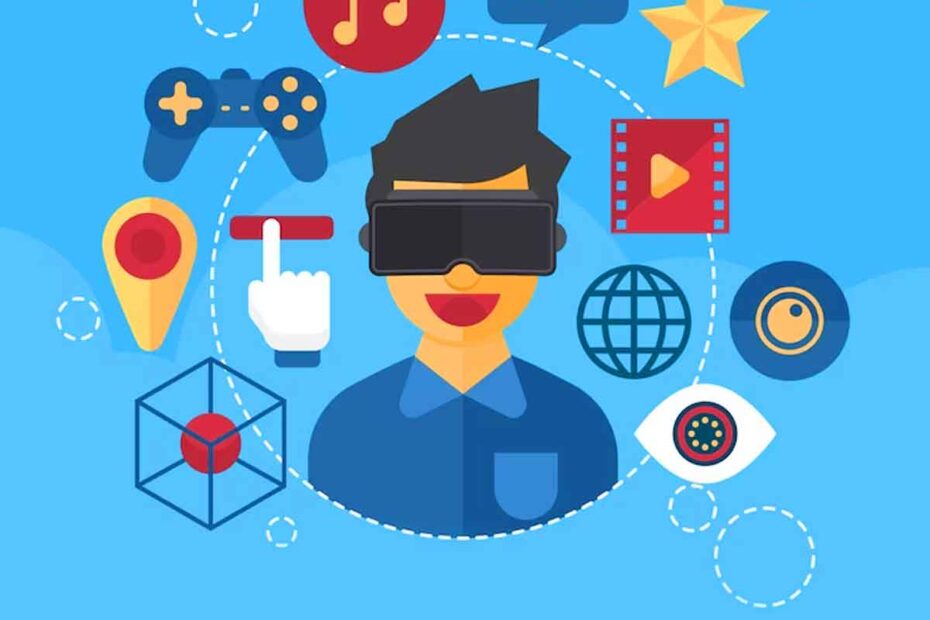In today’s world, where market competition is increasingly fierce, companies are constantly looking for innovative ways to attract and retain customers. One strategy that has gained popularity in recent years is gamification.
This strategy involves the use of game design elements and techniques in non-game contexts, such as the promotion of products and services. Gamification has proven to be an effective tool for increasing customer engagement, improving brand retention and ultimately driving sales.
In this article we are going to tell you everything you need to know about gamification and some guidelines so you can integrate it into your marketing strategy, as well as some cases of brands that have successfully implemented gamification.
The gamification concept
Gamification has been an informal practice for decades, although the term itself was coined in 2002 by Nick Pelling, a British programmer and game designer. However, the idea didn’t gain traction until 2010, when companies such as Foursquare and Badgeville began using gamification techniques on their platforms. Since then, gamification has experienced exponential growth, and has become an integral part of many companies’ marketing strategy.
Benefits of gamification in marketing
Gamification in marketing presents numerous benefits for companies and their customers. These include:
- Increased customer engagement: Gamification elements, such as rewards and challenges, can significantly increase customer interaction with a brand. Consumers tend to be more motivated to explore and try new products when there is a gamification component involved.
- Brand retention: Gamification can improve brand retention by providing memorable and entertaining experiences for customers. This can increase customer loyalty and ultimately lead to greater long-term engagement.
- Customer education: Games can be an effective tool for teaching customers about products and services. By learning through experience, consumers can develop a deeper understanding of a product’s benefits and features, which can increase sales.
- Data generation: Gamification allows companies to collect valuable information about their customers, such as their preferences, behaviors and buying patterns. This can help companies refine their marketing strategies and customize their offerings to meet the needs and wants of their customers.
Disadvantages of gamification
Despite its many benefits, gamification also presents some challenges and disadvantages. These include:
- Market saturation: As gamification becomes more popular, there is a risk that the market will become saturated with similar offerings. This can make it difficult for companies to stand out and ultimately diminish the impact of their gamification efforts.
- Effective game design and development: Creating an engaging and effective game can be a complicated and costly process. Companies must ensure that their games are engaging, easy to use and relevant to their brand and target audience.
- Maintaining customer interest: One of the biggest challenges of gamification is maintaining customer interest over time. Companies must constantly update and improve their games to prevent customers from getting bored and losing interest in the brand.
- Ethical issues: Gamification in marketing can raise ethical concerns, especially when it comes to collecting customer data. Companies need to be transparent about how data is collected and used, and ensure that customer privacy is respected.
How to implement gamification in your marketing strategy
To get the most out of gamification in marketing, companies should follow a number of best practices. These include:
- Set clear goals: Before implementing gamification, companies should set clear and measurable objectives. These goals may include increasing sales, improving customer retention or educating consumers about a new product.
- Know your target audience: Gamification will be most effective if it is tailored to the needs and wants of your target audience. Companies should thoroughly research their customers to understand their preferences and behaviors.
- Create engaging and relevant games: Games should be fun, engaging and relevant to the brand and product. Good game design should balance challenge with reward, and offer incentives that motivate customers to interact with the brand.
- Integrate gamification into the overall marketing strategy: Gamification should be part of a broader marketing strategy. Companies should ensure that their games are well integrated into their marketing campaigns and complement their promotional and sales efforts.
- Measure and adjust: Companies should monitor the performance of their gamification efforts and adjust their strategies accordingly. This may involve making changes to the game design, offering new incentives or modifying the way the game is promoted.
Examples of brands that have used gamification in their marketing strategy
These are just a few examples of how different companies have used gamification in their marketing strategies. The key to success in these cases has been the combination of engaging, relevant and well-designed game elements with a broader marketing strategy.
Starbucks
The Starbucks coffee shop chain Starbucks implemented its “Starbucks Rewards” loyalty program, in which customers accumulate stars for each purchase made. These stars can be exchanged for exclusive products and benefits. In addition, Starbucks also offers temporary challenges and promotions that encourage customers to make additional purchases to earn additional rewards.
Nike
Sports brand Nike created the“Nike Run Club” and“Nike Training Club” app to motivate users to exercise and reach their fitness goals. These apps include challenges, achievements and progress tracking features, allowing users to compete with friends and measure their performance. While not directly a sales strategy, these apps help increase brand loyalty and encourage the purchase of Nike products.
Duolingo
Duolingo is a language learning app that uses gamification to keep users engaged and motivated. Users earn points (called “lingots”) by completing lessons, maintaining study streaks, and achieving other milestones. These points can be used to unlock new features and customize the learning experience. Although Duolingo is a free app, its gamified approach has helped the company generate revenue by selling premium subscriptions and advertising.
McDonald’s
The famous fast food chain McDonald’s has used gamification in several marketing campaigns, such as its popular“Monopoly” game. In this game, customers receive Monopoly game pieces on McDonald’s products and have the opportunity to win prizes, from free food to cash prizes and other products. This campaign has been a success in terms of increasing sales and attracting customers to its restaurants.
M&M’s
The candy brand M&M’s launched a campaign called “Eye Spy Pretzel“ in 2013 to promote its new product, pretzel M&M’s. The campaign consisted of an online game in which users had to search for a pretzel M&M’s hidden in an image composed entirely of M&M’s. The game went viral and generated a lot of engagement on social media, resulting in increased sales and brand awareness.
Sephora
Cosmetics retailer Sephora developed the Sephora Beauty Insider app, which offers a gamified loyalty program. Customers earn points for their purchases, which they can then redeem for exclusive products and experiences. In addition, the app includes challenges and achievements that encourage users to try new products and share their experiences on social media.
Domino’s Pizza
The Domino’s Pizza chain launched the “Domino’s Pizza Hero” application in which users can design and create their own virtual pizzas. As they progress through the game, users learn about ingredients and pizza preparation techniques, which can increase interest in the brand’s products. In addition, the app allows users to order their custom pizza creations directly from the game.
Headspace
Headspace, a meditation and wellness app, uses gamification to motivate its users to develop and maintain healthy meditation habits. The app offers daily challenges and progress tracking, and encourages users to maintain daily meditation spurts. As users progress in their meditation practice, they unlock new lessons and levels in the app.
Samsung
Tech company Samsung launched its “Samsung Nation” program to encourage brand loyalty and participation in its online community. Users earn points and badges for completing activities such as writing reviews, posting in forums, and sharing content on social networks. These rewards can be redeemed for exclusive discounts and promotions on Samsung products.
Fitbit
Health and fitness technology company Fitbit uses gamification on its platform and devices to motivate users to reach their fitness goals. Users can compete with friends in activity challenges, earn achievements and receive badges for reaching fitness milestones. These gamified elements encourage interaction with the brand and promote the purchase of Fitbit devices and accessories.








